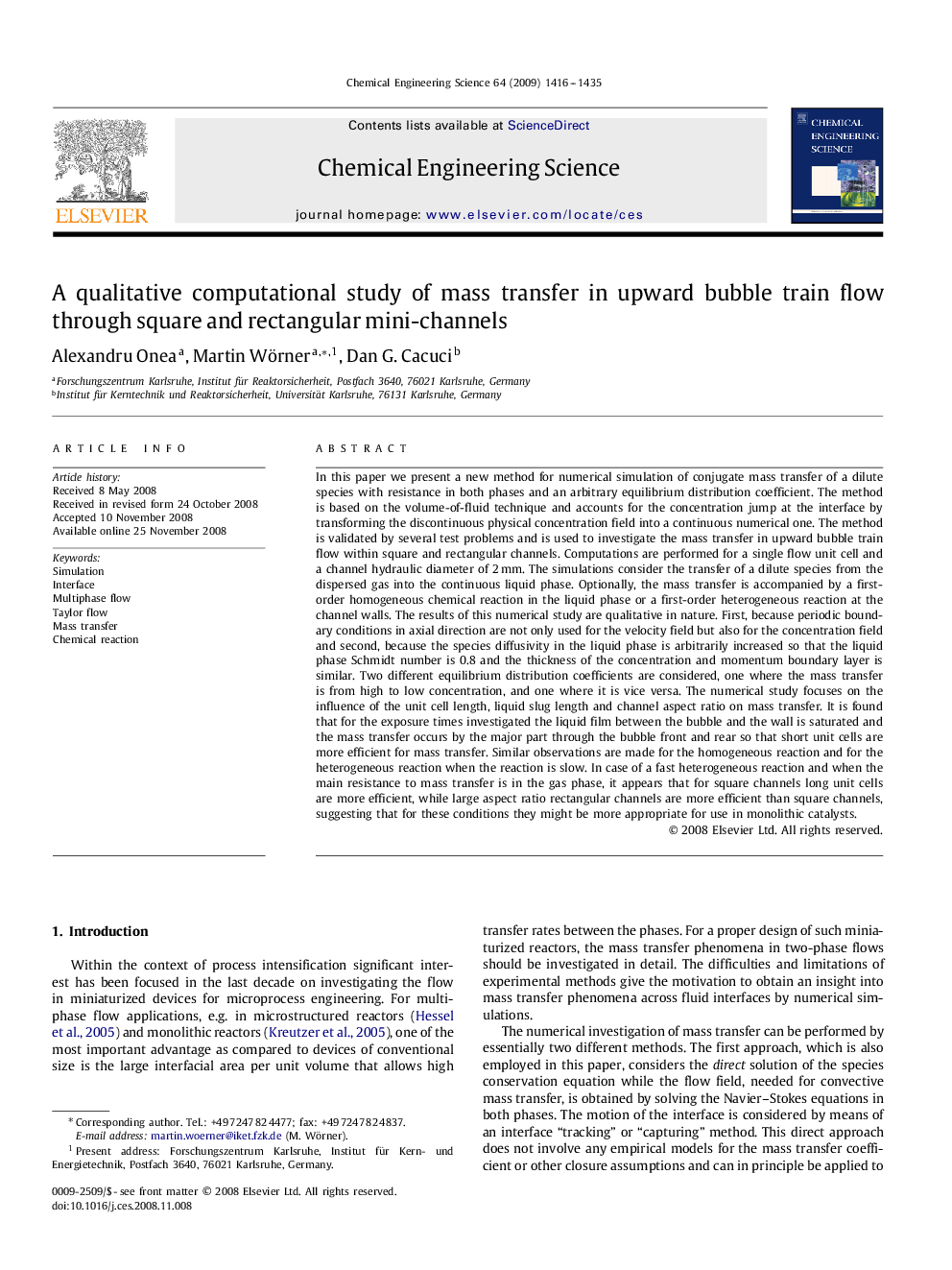| کد مقاله | کد نشریه | سال انتشار | مقاله انگلیسی | نسخه تمام متن |
|---|---|---|---|---|
| 158093 | 456995 | 2009 | 20 صفحه PDF | دانلود رایگان |

In this paper we present a new method for numerical simulation of conjugate mass transfer of a dilute species with resistance in both phases and an arbitrary equilibrium distribution coefficient. The method is based on the volume-of-fluid technique and accounts for the concentration jump at the interface by transforming the discontinuous physical concentration field into a continuous numerical one. The method is validated by several test problems and is used to investigate the mass transfer in upward bubble train flow within square and rectangular channels. Computations are performed for a single flow unit cell and a channel hydraulic diameter of 2 mm. The simulations consider the transfer of a dilute species from the dispersed gas into the continuous liquid phase. Optionally, the mass transfer is accompanied by a first-order homogeneous chemical reaction in the liquid phase or a first-order heterogeneous reaction at the channel walls. The results of this numerical study are qualitative in nature. First, because periodic boundary conditions in axial direction are not only used for the velocity field but also for the concentration field and second, because the species diffusivity in the liquid phase is arbitrarily increased so that the liquid phase Schmidt number is 0.8 and the thickness of the concentration and momentum boundary layer is similar. Two different equilibrium distribution coefficients are considered, one where the mass transfer is from high to low concentration, and one where it is vice versa. The numerical study focuses on the influence of the unit cell length, liquid slug length and channel aspect ratio on mass transfer. It is found that for the exposure times investigated the liquid film between the bubble and the wall is saturated and the mass transfer occurs by the major part through the bubble front and rear so that short unit cells are more efficient for mass transfer. Similar observations are made for the homogeneous reaction and for the heterogeneous reaction when the reaction is slow. In case of a fast heterogeneous reaction and when the main resistance to mass transfer is in the gas phase, it appears that for square channels long unit cells are more efficient, while large aspect ratio rectangular channels are more efficient than square channels, suggesting that for these conditions they might be more appropriate for use in monolithic catalysts.
Journal: Chemical Engineering Science - Volume 64, Issue 7, 1 April 2009, Pages 1416–1435